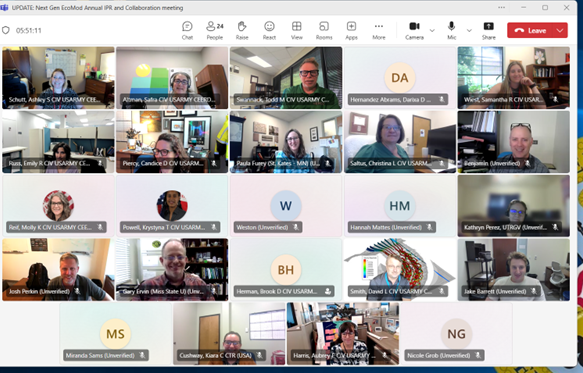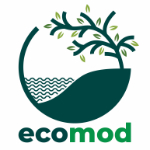Next Gen is an overarching collaboration between ERDC and Texas State University to develop both future modeling efforts and comprehensive data sets. There are many individual projects funded through Next Gen, led by both ERDC and our university partners.
Some projects include:
General Vegetation Component Model Development
The objective of this work is to develop a component-based general vegetation model for plant communities linked to aquatic environments by adapting existing photosynthesis-based vegetation models developed for freshwater aquatic, dune, and crop vegetation communities.
The primary product of this work will include a LandLab component package named GenVeg that will be capable of integrating with existing LandLab model components as well as existing hydrodynamic models and data sources using a standard input/output.
GenVeg is being utilized for other projects as well:
Oregon State DOONIES
This project will add to the DOONIES model to further describe the coupling between aeolian processes and dunes. It will provide updates to improve how the model illustrates biomass valuation of plant parts and dispersion. This will lead to a better understanding of the relationship between biomass accumulation and win effects.
Predicting Dreissenid Mussel Spread Before and After Management Impacts
The spread of the invasive dreissenid mussels, Dreissena polymorpha and Dreissena rostiformis bugensis, has become a major concern across the Western United States. Due to the risk potential for waterways and waterbodies across the United States, management practices need to be established to decrease the spread potential.
This project focuses on using the Dreissenid Mussel Dispersal Model that is currently being developed in collaboration with ERDC Integrated Ecological Modeling team and the Bureau of Reclamation and adding different, and potentially new, management practices into the model to determine how different practices could possible decrease spread across state lines and waterbodies.
Statistical Modeling for Quantifying Relationships Among Water Quality Parameters and Quagga Mussel Presence
This will be a collaborative effort between the ERDC Integrated Ecological Modeling Team (IEMT) and the US Bureau of Reclamation Ecological Research Laboratory (ERL). The ERL is currently collecting monthly water quality and planktonic samples (both zooplankton and phytoplankton) in multiple reservoirs in the SRP system. These data will be used by the IEMT to parameterize a suite of statistical models designed to untangle the complexity associated with quagga mussel presence and colonization. Statistical approaches will likely include multivariate statistics and multi-model selection under an information theoretic approach.
Seminar Series

See past seminars here.
Annual Collaboration Meeting
Wednesday June 25th 2025 was the annual collaboration meeting for the ERDC and academic partners for the Next Generation Ecological Modeling (NextGen) effort. PIs from EL and ITL along with professors from seven universities (Texas State, Texas A&M, St. Catherine University, Utah State, and University of Texas Rio Grande Valley) showcased their progress towards developing USACE’s state-of-the-art integrated computational models for forecasting environmental response across multiple temporal and spatial scales.
In the last 5 years, there have been over 500 documented and tangible deliverables created from this effort including computational models, code libraries, USACE certified models, peer reviewed publications, workshops, graduate courses, technical presentations, and datasets. There have also been over 30 graduate students whose academic research directly contributed to the effort, several of which are now employed by USACE.

